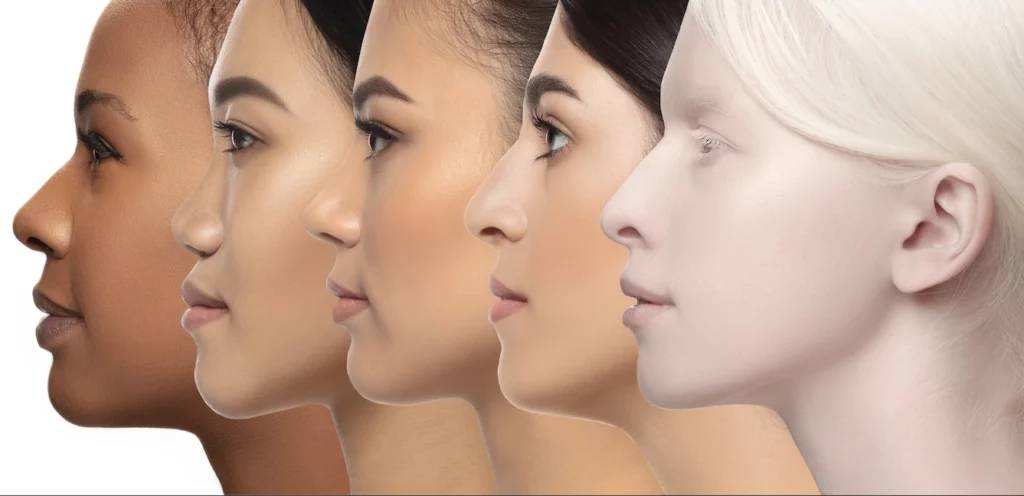Ethnic Rhinoplasty: African American
By this time everyone knows that I am a double board certified ENT and Facial Plastic Surgeon. Rhinoplasty is my favorite cosmetic surgery to perform.
It is important to understand the nuances that are important to the different races and ethnicities. In this blog I will discuss African American Cosmetic Rhinoplasty.
Rhinoplasty, commonly known as a nose job, is a popular cosmetic surgical procedure aimed at reshaping and enhancing the appearance of the nose.
Ethnic rhinoplasty, on the other hand, is a specialized approach that considers the unique characteristics and anatomical differences of various ethnicities when performing nasal surgery.
This essay will delve into the nuances of ethnic rhinoplasty, exploring the distinctions between cosmetic and functional rhinoplasty, as well as the variances between Caucasian and African American noses.
Difference Between Cosmetic and Functional Rhinoplasty
Cosmetic rhinoplasty is primarily focused on enhancing the aesthetic appearance of the nose, addressing concerns such as a dorsal hump, a drooping tip, or asymmetry.
This type of rhinoplasty aims to improve the balance and proportion of the nose in relation to the rest of the facial features, enhancing overall facial harmony.
Functional rhinoplasty, on the other hand, is centered on improving nasal function and addressing breathing difficulties. This may involve procedures such as septoplasty to correct a deviated septum, turbinate reduction to alleviate nasal congestion, or nasal valve repair to enhance airflow through the nostrils. Functional rhinoplasty aims to combine aesthetic improvements with functional benefits, ensuring that the patient not only looks better but also breathes easier.
Differences Between Caucasian and African American Noses
When it comes to ethnic rhinoplasty, one of the key considerations is the anatomical differences between noses of different ethnic backgrounds. Caucasian and African American noses, in particular, exhibit distinct characteristics that require specialized techniques for surgical correction.
Caucasian noses often feature a higher nasal bridge, a well-defined tip with a more projected profile, and thinner nasal skin. It is also more common to see large, strong cartilages when performing the procedure.
This has to be taken into consideration when operating on a Caucasian because the combination of thin skin strong cartilages are difficult to camouflage over time.
In contrast, African American noses typically have a lower nasal bridge, a broader base, and thicker, oilier skin combined with weak small cartilages. This makes it a bit harder to build better tips and refined tip defining points.
The nasal tip may be less defined, with a wider nostril flare and a flatter nasal dorsum. Understanding these differences is crucial for achieving natural-looking results in ethnic rhinoplasty procedures.
Benefits of Ethnic Rhinoplasty
Ethnic rhinoplasty offers numerous benefits for individuals seeking nose surgery that respects and enhances their unique ethnic features. By tailoring surgical techniques to the specific characteristics of the patient’s nose, ethnic rhinoplasty can achieve more harmonious and proportionate results that complement the individual’s facial features.
In the case of African American rhinoplasty, specialized techniques such as cartilage grafting, alar base reduction, and dorsal augmentation are often employed to address specific concerns such as nostril width, nasal tip projection, and nasal bridge height. These techniques allow for precise modifications that preserve the patient’s ethnic identity while achieving the desired aesthetic goals.
Ethnic Rhinoplasty Nasal Surgery
In conclusion, ethnic rhinoplasty is a specialized approach to nasal surgery that considers the unique anatomical features and characteristics of different ethnicities.
By understanding the differences between cosmetic and functional rhinoplasty, as well as the distinctions between Caucasian and African American noses, surgeons can deliver tailored treatment plans that optimize both aesthetic outcomes and functional improvements.
Ethnic rhinoplasty offers a personalized and culturally sensitive approach to rhinoplasty nose surgery, ensuring that patients receive results that enhance their natural beauty while preserving their ethnic identity.
By embracing the diversity of nasal anatomy and employing innovative techniques, ethnic rhinoplasty continues to evolve as a valuable tool for achieving successful and satisfying outcomes in patients of all backgrounds.




